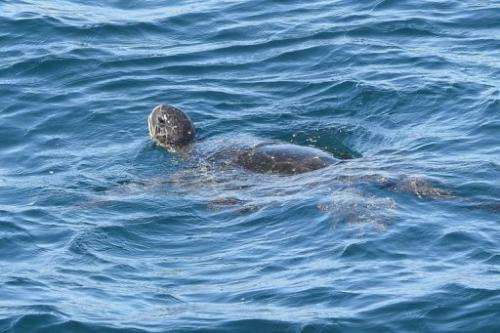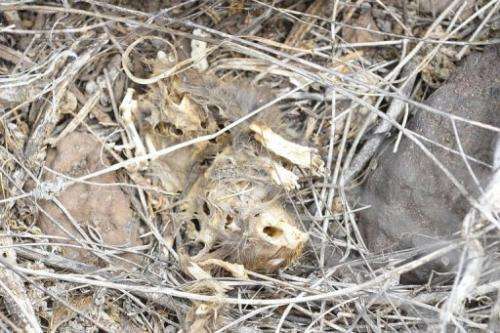Ridding Galapagos of rats to preserve its famed tortoises

Efforts are underway to save the famed giant tortoises of the Galapagos Islands by wiping out the rodents that prey on their eggs and hatchlings, environmentalists here said.
Rats, which are not native to the Pacific island chain, have decimated the tortoise population and threaten to wipe it out altogether.
"They destroy the eggs and kill the young of the species, disrupting the natural balance of an ecosystem as fragile as the Galapagos'," Edwin Naula, director of the Galapagos Natural Park, told AFP.
This week, rat poison was dropped by helicopter all over the uninhabited islet of Isla Pinzon in an experiment designed to pave the way for mass rodent eradication.
Tortoises in the park emerge from the egg in hatcheries, are raised in captivity and introduced to the wild when they are four or five years old.
"We haven't had luck in producing them in the wild because of the presence of the rats, but we hope that that will change once the rodents are wiped out," said Christian Sevilla, who is in charge of conservation programs.
The Galapagos, some 1,000 kilometers (620 miles) off Ecuador's coast, is an archipelago of 13 islands and more than 100 rocks and micro-islands.
It became famous when Charles Darwin visited in 1835 to conduct landmark research that led to him to his revolutionary theories on evolution.

The islands were uninhabited when Europeans first visited in the 16th century, but today have a population of around 25,000.
Experts estimate there were once some 300,000 giant tortoises, but the population dwindled during the 18th and 19th century after they were hunted by whalers and pirates as fresh food.
The invaders also inadvertently introduced new predators, like the rats, which further reduced the tortoise population.
Today between about 30,000 and 40,000 tortoises remain on the Galapagos, which was declared a UNESCO World Heritage Site in 1978 because of its unique plant and animal life.
In 2007, however, UNESCO declared the island chain's environment endangered due to the increase in tourism and the introduction of invasive species.
Park overseers are making an effort to eliminate rodents throughout the island chain which has at least 1,500 species of flora and 500 types of fauna.
Experts estimate that there are now between eight and 12 rats per hectare in the infested areas.
In addition to harming the tortoises, the rodents also prey upon iguanas and lizards, and researchers fear the rat may harm, or even wipe out some of the countless other species not yet discovered.
As part of the effort to preserve the fragile Galapagos ecosystem, organizations such as the US group Conservation Island helped spread tonnes of rat poison pellets mixed with food and an anti-coagulant on Pinzon.
There are drawbacks to using this approach, however, including "keeping the bait from being consumed by native or species," Sevilla said.
In an effort to keep bird of prey safe from harm, about 60 hawks are being raised in cages on a slope of Pinzon island. But naturalists here said at least one owl had died after eaten one of the poisoned rodents.
"That's the price you pay for a plan that will allow for a restoration of the natural system," said Danny Rueda, another official involved in the day to day management of Galapagos.
Some birds and animals are being safeguarded during the effort to eradicate the rats and will be released in about five days—time enough for the poison to biodegrade.
If the extermination scheme works on Pinzon, it will be extended to other islands in the Galapagos chain, including inhabited ones, park officials said.
(c) 2012 AFP




















